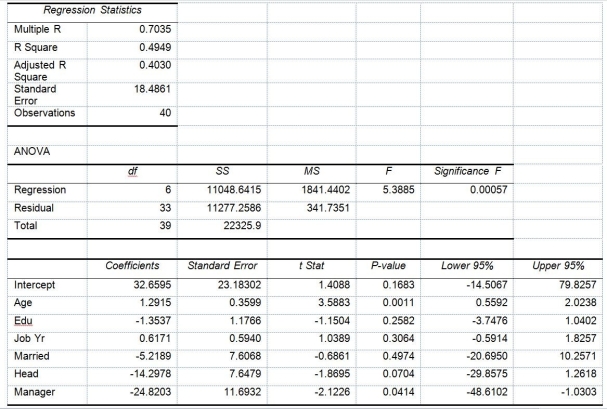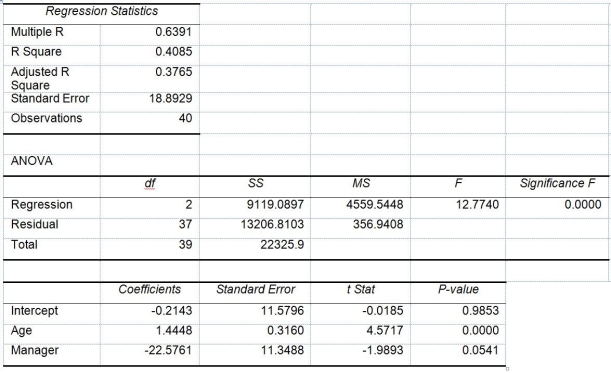TABLE 14-17


Model 2 is the regression analysis where the dependent variable is Unemploy and the independent variables are
Age and Manager. The results of the regression analysis are given below:

-Referring to Table 14-17 Model 1, we can conclude that, holding constant the effect of the other independent variables, there is a difference in the mean number of weeks a worker is unemployed due to a layoff between a worker who is married and one who is not at a 10% level of significance if we use only the information of the 95% confidence interval estimate for β₄.
Definitions:
Job Complexity
Refers to the number and difficulty of tasks required in a job, as well as the variability and unpredictability of those tasks.
Self-managing Teams
Groups of workers who are given the autonomy to manage their own tasks, make decisions, and solve problems without traditional managerial oversight.
Empowering Employees
The process of giving workers more autonomy, authority, and control over their work decisions and resources, fostering a sense of ownership and enhancing motivation.
Decision Making
The process of making choices by identifying alternatives, evaluating them, and selecting a course of action.
Q19: Data were collected on the amount of
Q26: Referring to Table 13-4, the standard error
Q72: Referring to Table 16-11, using the second-order
Q78: Referring to Table 17-9, an R chart
Q81: Referring to Table 13-4, the managers of
Q94: Referring to Table 14-17 Model 1, the
Q131: Referring to Table 17-5, a p control
Q185: Referring to Table 13-13, the conclusion on
Q242: Referring to Table 14-18, the null hypothesis
Q319: When an explanatory variable is dropped from